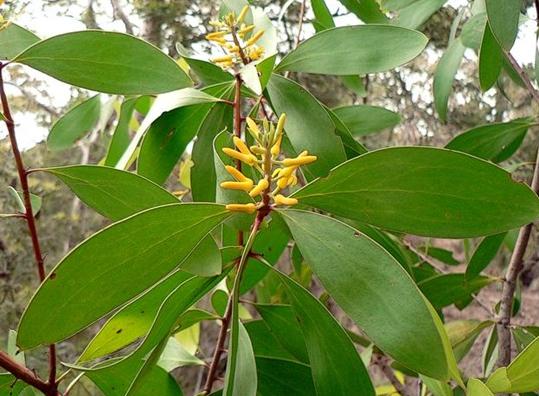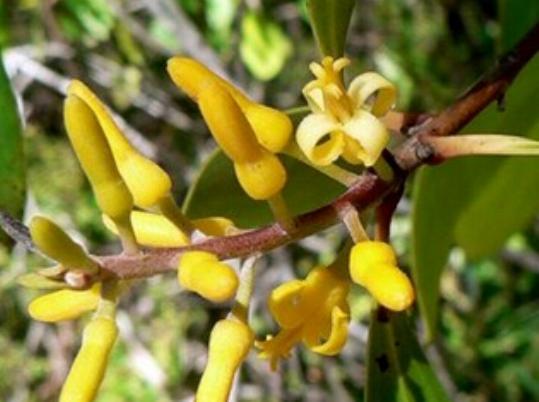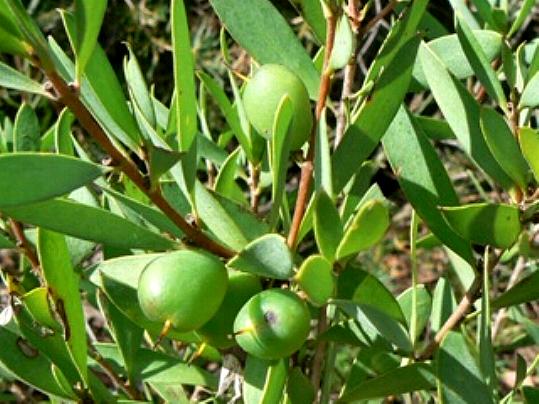
| previously known as Linkia levis Antonio José Cavanilles, 1805 Broad Leaf Geebung PROTEACEAE | Don Herbison-Evans, (donherbisonevans@outlook.com) |

| previously known as Linkia levis Antonio José Cavanilles, 1805 Broad Leaf Geebung PROTEACEAE | Don Herbison-Evans, (donherbisonevans@outlook.com) |
Bright green leaves, red flaky bark, pretty flowers, and edible fruit – what’s not to like about Persoonias in general and Persoonia levis in particular?
The Broad Leaf Geebung is an understorey shrub to small tree growing on the east coast of Australia in a range of woodland environments, usually dry open forest or sandy heath. Such dry schlerophyll forests are fire prone and Persoonia levis has adapted to survive regular burning by re-sprouting from an underground lignotuber. A lignotuber is a starchy swelling of the root crown that contains buds from which new stems may sprout. The thick red papery bark is also a bushfire protection device. This enables the trunk and branches of the tree to re-sprout by protecting dormant buds during a fire. Fallen seeds also readily germinate after a bush fire. The cycle of burn followed by re-sprouting and germination only works if the fires are well spaced. Fire every year can kill even the most fire adapted species.

Leaves
Bright green leaves contrast with the dull khaki shade
of eucalypts making them stand out in the bush.
The leaves are large, ranging from 8 to 20cm long and
2 to 4cm wide, attached alternately along the stem.
They are usually curved but may be lanceolate
or even oval shaped.
Clear lateral veins are obvious.
The branchlets are often bright red which contrasts
very nicely with the green of the leaves.
Bark
The loose flaky bark is conspicuous and very attractive.
It can sometimes appear black on the outside because of
burning in previous fires but the
red colour is apparent underneath.

Flowers
Like the entire genus Persoonia levis has tiny yellow flowers
from 10 to 15mm long that appear in summer.
The long buds are cylindrical with a squashed round base;
as the flowers open they display 4 spreading segments
which curl backwards.
Above the segments are 4 anthers which curve downwards
with the style sitting upright in the centre.

Fruit
Fruits are small, round and green.
The old style of the flowers persists in the fruit,
appearing like a pointy tip.
The fruit ripens after falling to the ground
where they are then easily accessible by native birds and animals.
The Broad Leaf Geebung can be grown in the garden (if you can find plants available in the nursery) as long as you can give it very good drainage in a free draining soil, and lots of sunshine. They are frost resistant and cope with extended periods of little to no rain fall once established. They are difficult to grow from seed but success has been had with softwood cuttings.
Caterpillar FAQs |
| Flowers in Australia |
(updated 4 December 2009)